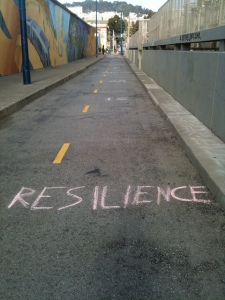Recently I attended my university’s Teaching and Learning Conference where the theme was on employer engagement: “Beyond the Placement: Where Next?”. The conference didn’t start with the usual long keynote speech from a single speaker, but was more of a joint effort with four speakers giving their perspectives on the theme. First was Professor Carol Costley from Middlesex University talking from the perspective of the academic as researcher, followed by Professor Richard Sandell from the School of Museum Studies here at Leicester, who spoke about how curriculum design could be used to increase the range and diversity of contact between students and employers. The third speaker was Jennifer Williams from Teach First who spoke about the core competencies and values they looked for in their graduate recruits, and the fourth speaker was Dabean Faraj, a medical student, who gave an excellent and humorous presentation that brought the differing strands together from the perspective of a student.

Photo: miz_ginevra (CC BY 2.0)
The keynotes over we departed to various parallel sessions before coming together later for discussions. The discussion highlighted the difference (and potential conflict of interest) between education and training, and as one of my colleagues put it we were veering “dangerously close to discussing the purpose of a university.” I’m firmly in the education in its widest sense camp rather than education as training. That’s not to say that employers shouldn’t be involved just that that involvement needs to be carefully considered. Employers can bring a great deal to the table, but their power needs to be kept in check. Unfortunately, a recent speech by our new Minister of State for Universities and Science, Jo Johnson, seems to be indicating a different agenda “Businesses should not just be seen as customers of universities … but as active partners”. A lot depends on that definition of ‘partner’, but that’s the subject for another post.
Jennifer Williams mentioned that resilience was one of the core competencies that applicants tended to score lower on. So what do we mean by ‘resilience’? One of the other attendees described it as ‘bouncebackability’, the ability to pursue a goal or objective with flexibility and determination in spite of difficulties and setbacks along the way. It’s a small part of a person’s personality but one that can have a big effect.
So how do we develop it? One suggestion was for failure to be a low cost option, with an opportunity to succeed afterwards. This may happen, and our response to it in conjunction with our students can help them to become more resilient, but how could we possibly design for that? Are we really going to deliberately engineer situations that will cause our students to fail in order that we can teach them to be resilient?
An alternative, with apologies to Vygotsky, is to use the ‘zone of proximal discomfort’. We learn resilience not in the act of failing, but in our response to it, in the act of striving to overcome those challenges that we think are beyond us. In the words of Tennyson, “ … To strive, to seek, to find, and not to yield.” An example of this is military training where a recruit is taken out of their mental and physical comfort zone, but not beyond their ability (although they might not think so, particularly in the case of the military where it’s less stepping outside the comfort zone and more of an emigration). The end result is an increase in confidence, ability and the resilience and character to go forward when all your senses are telling you to take cover instead. Schools are increasingly starting to recognise the value of resilience as part of the focus on character education, precisely because of the impact it can have on learning and the students’ lives as a whole. Which of course brings us back full circle: education as a holistic practice, not job training.
